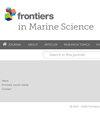红外弱小目标检测的混合对比度方法
IF 3
2区 生物学
Q1 MARINE & FRESHWATER BIOLOGY
引用次数: 0
摘要
复杂背景下红外弱小目标检测在海上搜救等领域具有重要意义。然而,由于高亮度背景、复杂边角和随机噪声的干扰,这一直是一项艰巨的任务。特别是当目标接近高亮度背景区域时,目标很容易被淹没。本文提出了一种新的对比度方法框架——混合对比度度量(HCM),该框架由相对全局对比度度量(RGCM)计算和小块局部对比度加权函数两个主要模块组成。在第一个模块中,对比计算时不直接使用相邻像素作为基准,而是采用稀疏低秩分解方法获取原始图像的全局背景作为基准,并在全局背景上进行局部最大扩张(LMD)运算,恢复边缘/角信息。对原始图像进行高斯匹配滤波运算,抑制噪声,并计算滤波后图像与基准图像之间的RGCM,增强真实弱小目标,同时消除平坦背景区域。在第二个模块中,采用差分高斯滤波(DoG)作为加权函数,并对其进行改进。由于第一模块中的基准是全局而非局部获得的,并且第二模块中的patch尺寸很小,因此该算法可以避免目标接近高亮度背景并被其淹没的问题。在14个真实红外序列和1个单帧数据集上的实验表明了该算法的有效性,无论从目标增强还是背景抑制的角度来看,该算法通常都能取得比基线算法更好的检测性能。本文章由计算机程序翻译,如有差异,请以英文原文为准。
A hybrid contrast method for infrared small dim target detection
Infrared (IR) small dim target detection under complex background is crucial in many fields, such as maritime search and rescue. However, due to the interference of high brightness background, complex edges/corners and random noises, it is always a difficult task. Especially, when a target approaches a high brightness background area, the target will be easily submerged. In this paper, a new contrast method framework named hybrid contrast measure (HCM) is proposed, it consists of two main modules: the relative global contrast measure (RGCM) calculation, and the small patch local contrast weighting function. In the first module, instead of using some neighboring pixels as benchmark directly during contrast calculation, the sparse and low rank decomposition method is adopted to get the global background of a raw image as benchmark, and a local max dilation (LMD) operation is applied on the global background to recover edge/corner information. A Gaussian matched filtering operation is applied on the raw image to suppress noises, and the RGCM will be calculated between the filtered image and the benchmark to enhance true small dim target and eliminate flat background area simultaneously. In the second module, the Difference of Gaussians (DoG) filtering is adopted and improved as the weighting function. Since the benchmark in the first module is obtained globally rather than locally, and the patch size in the second module is very small, the proposed algorithm can avoid the problem of the targets approaching high brightness backgrounds and being submerged by them. Experiments on 14 real IR sequences and one single frame dataset show the effectiveness of the proposed algorithm, it can usually achieve better detection performance compared to the baseline algorithms from both target enhancement and background suppression point of views.
求助全文
通过发布文献求助,成功后即可免费获取论文全文。
去求助
来源期刊

Frontiers in Marine Science
Agricultural and Biological Sciences-Aquatic Science
CiteScore
5.10
自引率
16.20%
发文量
2443
审稿时长
14 weeks
期刊介绍:
Frontiers in Marine Science publishes rigorously peer-reviewed research that advances our understanding of all aspects of the environment, biology, ecosystem functioning and human interactions with the oceans. Field Chief Editor Carlos M. Duarte at King Abdullah University of Science and Technology Thuwal is supported by an outstanding Editorial Board of international researchers. This multidisciplinary open-access journal is at the forefront of disseminating and communicating scientific knowledge and impactful discoveries to researchers, academics, policy makers and the public worldwide.
With the human population predicted to reach 9 billion people by 2050, it is clear that traditional land resources will not suffice to meet the demand for food or energy, required to support high-quality livelihoods. As a result, the oceans are emerging as a source of untapped assets, with new innovative industries, such as aquaculture, marine biotechnology, marine energy and deep-sea mining growing rapidly under a new era characterized by rapid growth of a blue, ocean-based economy. The sustainability of the blue economy is closely dependent on our knowledge about how to mitigate the impacts of the multiple pressures on the ocean ecosystem associated with the increased scale and diversification of industry operations in the ocean and global human pressures on the environment. Therefore, Frontiers in Marine Science particularly welcomes the communication of research outcomes addressing ocean-based solutions for the emerging challenges, including improved forecasting and observational capacities, understanding biodiversity and ecosystem problems, locally and globally, effective management strategies to maintain ocean health, and an improved capacity to sustainably derive resources from the oceans.
 求助内容:
求助内容: 应助结果提醒方式:
应助结果提醒方式:


